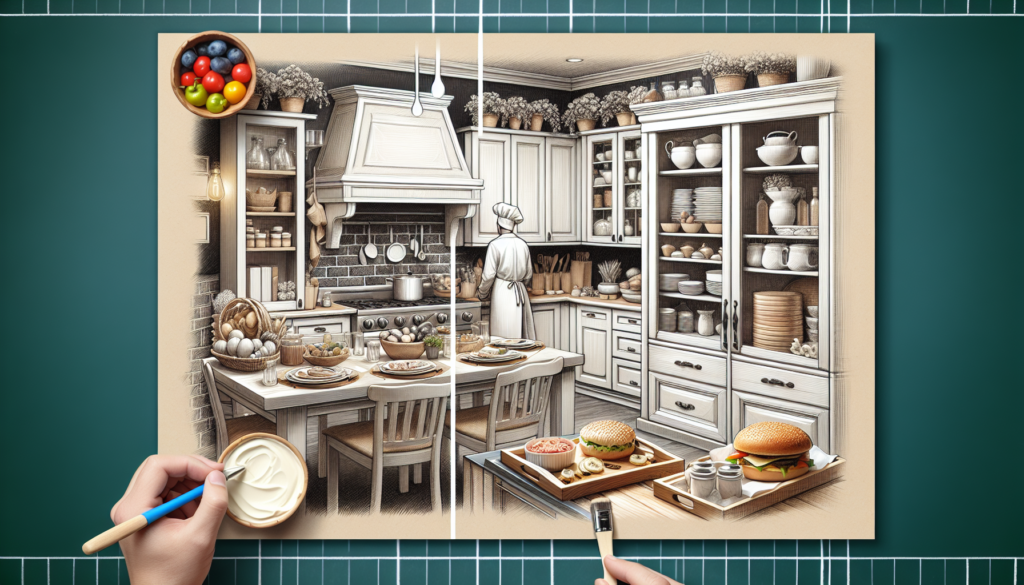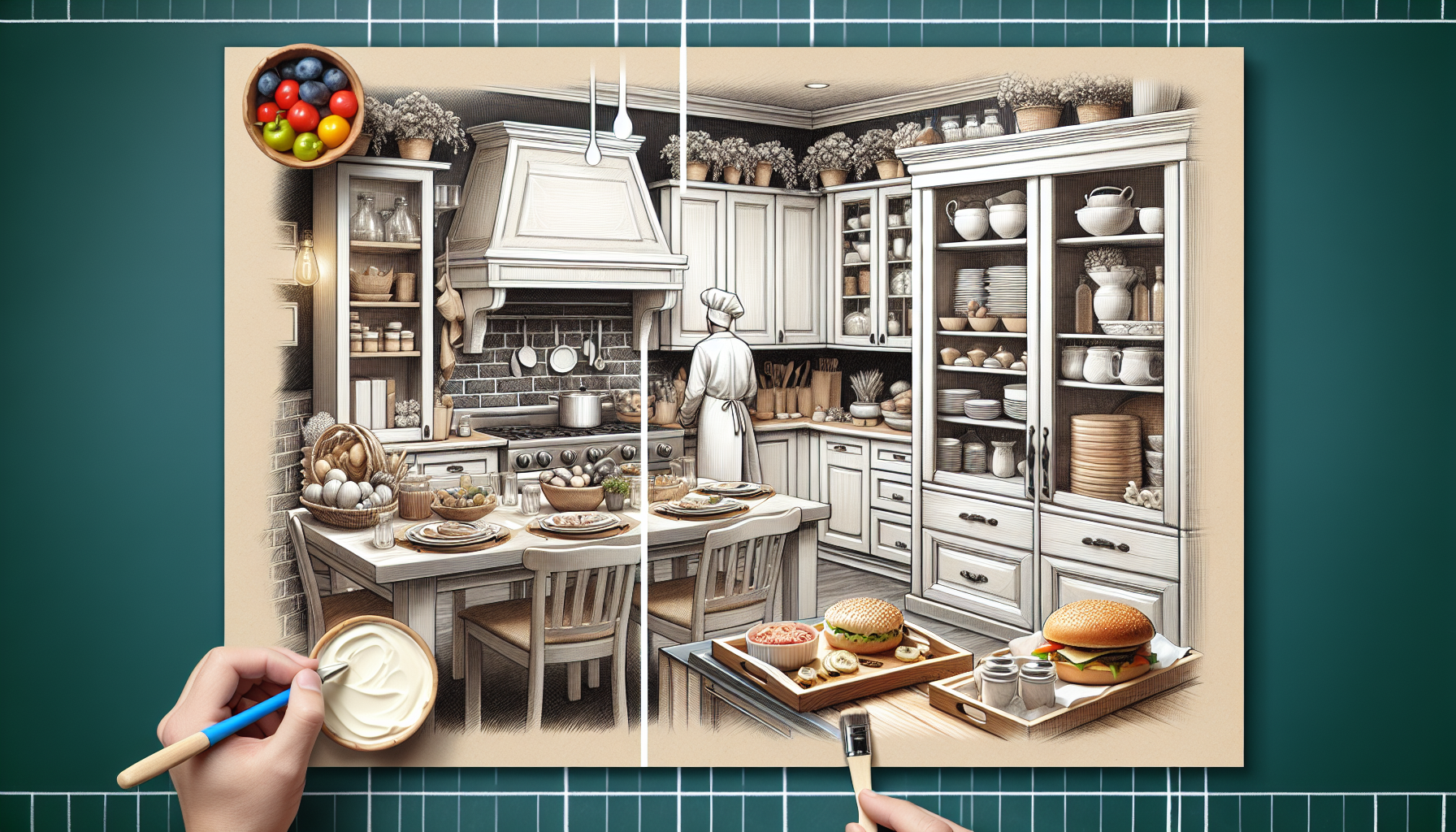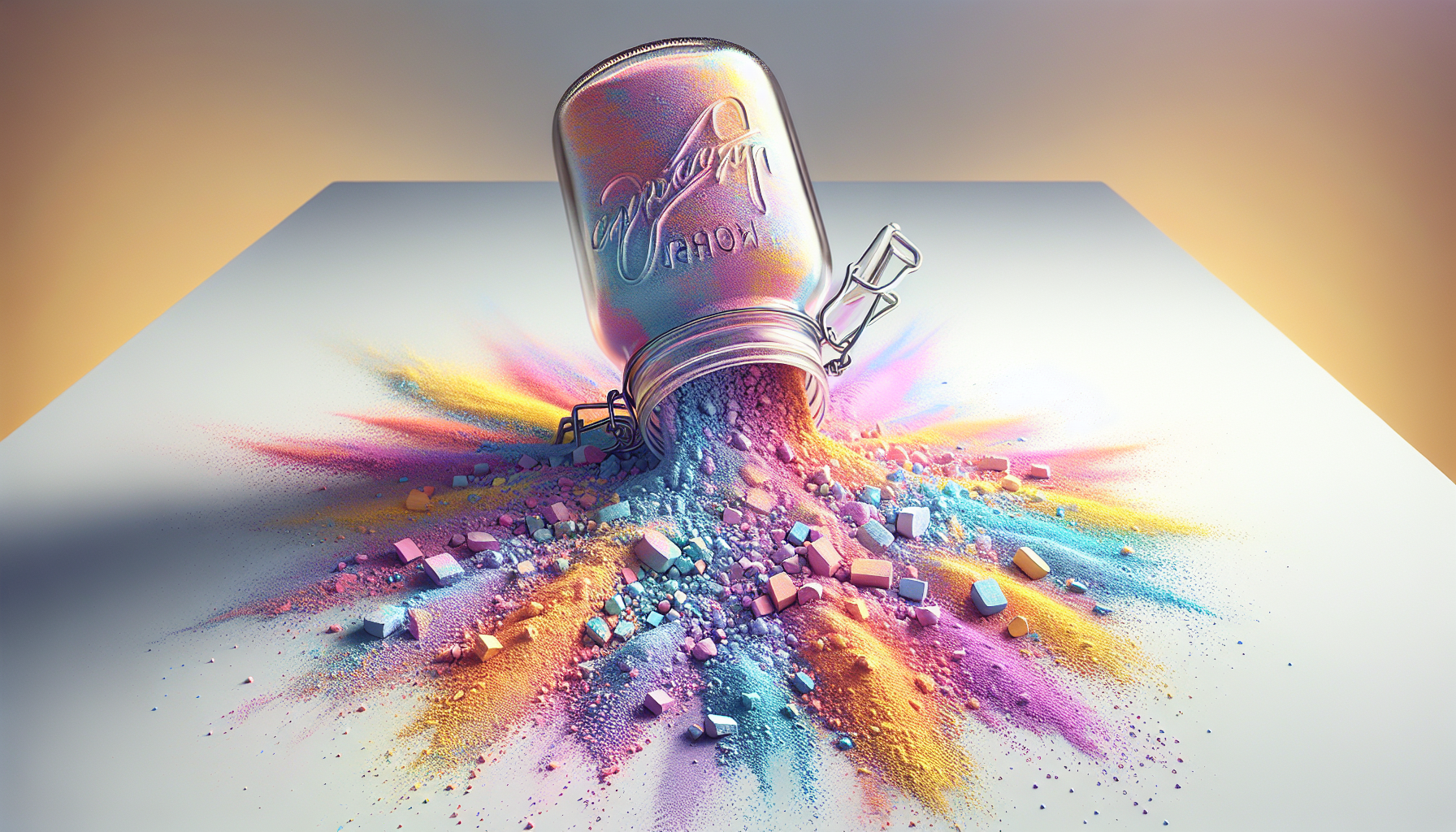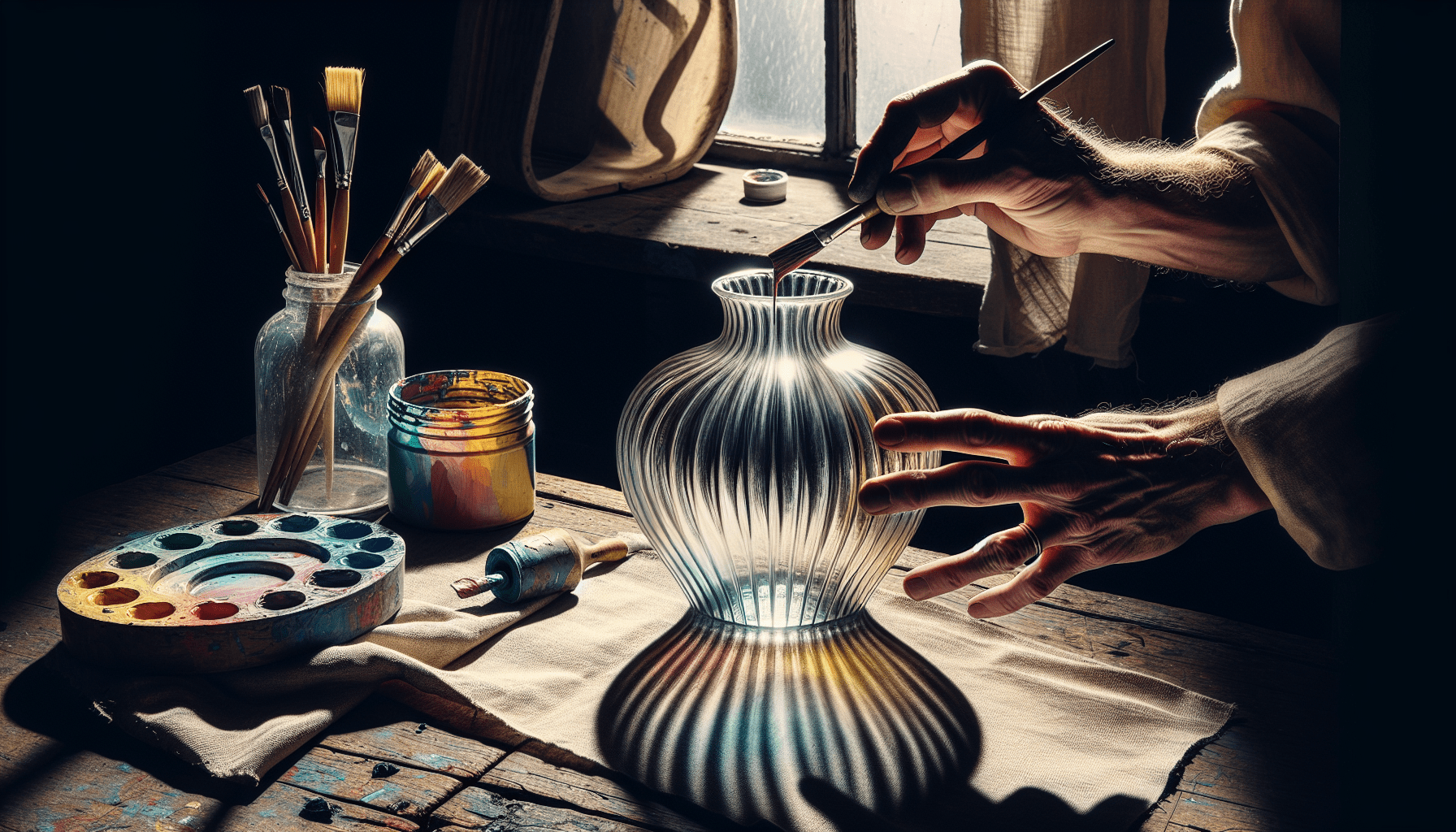Chalk paint has gained popularity in recent years due to its ability to transform furniture and create a vintage, distressed look. However, if you’re considering painting a piece of furniture that will be in contact with food, it’s important to ask yourself: Is chalk paint food safe? This article will explore the potential risks of using chalk paint on surfaces that come into contact with food, and provide you with the necessary information to make an informed decision about whether or not to use chalk paint in your kitchen or dining area.
What is chalk paint?
Chalk paint is a type of decorative paint that has gained popularity in recent years due to its unique matte finish and versatility. It is made from a combination of ingredients that typically include calcium carbonate, water, pigment, and a binder such as acrylic. Chalk paint is known for its excellent coverage and its ability to adhere to various surfaces without the need for extensive preparation or priming.
Ingredients and composition
The composition of chalk paint can vary depending on the brand and formulation. However, the primary ingredient, calcium carbonate, gives chalk paint its distinctive matte and chalky appearance. This ingredient is a fine powder derived from natural sources such as limestone or chalk. The calcium carbonate particles provide a highly pigmented and opaque finish when mixed with water and other additives.
To enhance its durability and adhesion, a binder such as acrylic is often added to the chalk paint formulation. This binder helps the paint adhere to different surfaces and provides a protective layer once the paint has dried. Other additives, such as pigments to add color, may also be included depending on the desired result.
Common uses
Chalk paint is widely used for various decorative and artistic purposes. It can be applied to furniture, walls, cabinets, and even accessories like picture frames and vases. The ease of application and the ability to achieve desirable effects, such as distressing or aging, have made chalk paint a popular choice among DIY enthusiasts and professional painters alike.
One of the main advantages of chalk paint is its ability to adhere well to different surfaces without the need for extensive sanding or priming. This makes it a great option for refurbishing old furniture or updating the look of a room. Chalk paint can easily be applied to surfaces like wood, metal, ceramic, and even laminate with minimal effort.
Potential risks of chalk paint in contact with food
While chalk paint is generally safe for decorative purposes, there are some potential risks associated with using it in contact with food. These risks primarily stem from the chemicals found in the paint and their potential to leach into food or be ingested accidentally.
Chemicals in chalk paint
Chalk paint often contains various chemicals that may not be food-safe. These chemicals can include solvents, preservatives, and colorants that are commonly used in paint products. While these chemicals are intended for general decorative use, they may not meet the same standards of safety as those designed specifically for food-related applications.
One specific concern is the presence of heavy metals in some chalk paint formulations. Heavy metals, such as lead or cadmium, can be toxic if ingested and can cause serious health issues over time. These metals may be present as impurities in the pigments or as additives to enhance certain properties of the paint.
Health effects
The potential health effects of chalk paint in contact with food depend on the specific chemicals present in the formulation and the level of exposure. Ingesting or consuming food that has come into direct contact with unsafe chemicals in chalk paint may lead to various health issues, ranging from mild gastrointestinal discomfort to more severe reactions.
Certain chemicals commonly found in paint products, such as solvents or additives, can cause allergic reactions or irritate the respiratory system. Prolonged exposure or repeated ingestion of small amounts of these chemicals may also have long-term effects on health, particularly if heavy metals are present. Pregnant women, young children, and individuals with compromised immune systems may be more vulnerable to the potential health risks associated with chalk paint.
Transfer of chemicals
Another concern with using chalk paint in food-related projects is the potential transfer of chemicals from the painted surface to the food itself. While the paint may initially adhere well to the surface, factors such as moisture, temperature, and contact with acidic or oily substances can cause the paint to deteriorate or flake off over time. This can result in the transfer of paint particles or chemical residues onto the food, which can pose a risk if ingested.
It is important to note that the degree of transfer and risk will depend on various factors, such as the quality of the paint, the condition of the painted surface, and the type of food in contact with the painted surface. However, due to the potential risks involved, caution should be exercised when using chalk paint in direct contact with food.

Regulation and labeling of chalk paint
To address the concerns associated with chalk paint and its potential risks in food-related projects, regulatory bodies have established certain regulations, standards, and labeling requirements. These measures aim to ensure the safety and transparency of products in the market.
Food and Drug Administration (FDA) regulations
In the United States, the Food and Drug Administration (FDA) is responsible for regulating products that come into contact with food, including paints and coatings. However, the FDA does not specifically regulate chalk paint as it is considered a decorative product rather than a food-grade material.
While the FDA does not have specific regulations pertaining to chalk paint, it does provide general guidance on the safe use of coatings and additives in food-related applications. Manufacturers are encouraged to adhere to good manufacturing practices and use only approved ingredients in their products. However, compliance with FDA regulations is voluntary for decorative paint products like chalk paint.
Voluntary standards and certifications
In the absence of specific regulations, some paint manufacturers may choose to obtain voluntary certifications or adhere to certain industry standards to demonstrate their commitment to safety. These standards may include testing for heavy metals, adherence to specific ingredient lists, or compliance with international safety standards.
Consumers looking for a chalk paint product specifically designed for food-related projects should look for certifications or labels that indicate compliance with food-contact safety standards. While voluntary certifications can provide some assurance of safety, it is important to note that they are not mandatory and may vary depending on the region or country in which the product is manufactured or sold.
Labeling requirements
To inform consumers about the potential risks associated with chalk paint, manufacturers are required to provide clear and accurate labeling on their products. This may include information about the intended use of the product, any potential hazards or warnings, and instructions for safe handling and disposal.
Consumers should carefully read and follow the instructions and warnings provided on the packaging of chalk paint products. If a product does not have clear labeling or lacks information related to food-safe use, it is best to assume that it is not suitable for direct contact with food.
Alternatives to chalk paint for food-related projects
Given the potential risks of using chalk paint in food-related projects, it is advisable to explore alternative options that are specifically designed for such applications. Fortunately, there are several food-grade paint options and non-toxic sealants and finishes available on the market.
Food-grade paint options
Food-grade paint, also known as edible paint or cake decorating paint, is specifically formulated to be safe for direct contact with food. These paints are typically made from natural and edible ingredients, such as food coloring agents, sugar, and water-based binders. They are commonly used for decorating cakes, cookies, and other edible creations.
Food-grade paint provides a safe and non-toxic alternative for those seeking to add decorative touches to food. It is available in various colors and can be applied directly onto icing, fondant, or other edible surfaces. These paints are designed to be safe for consumption and typically do not contain harmful chemicals or heavy metals.
Non-toxic sealants and finishes
If you prefer to use regular chalk paint for decorative purposes but want to ensure the safety of the painted surface, non-toxic sealants and finishes can be applied as an extra layer of protection. These products are specifically designed to create a food-safe barrier between the painted surface and the food.
Non-toxic sealants and finishes are typically water-based and do not contain harmful chemicals or additives. They provide an additional layer of durability and help to prevent the transfer of paint particles or chemicals onto food. These products can be applied over the dried chalk paint, following the manufacturer’s instructions, to create a food-safe surface.

Safety precautions when using chalk paint
If you still choose to use chalk paint for non-food-related projects or specific areas that will not come into direct contact with food, it is important to take certain safety precautions to minimize potential risks.
Proper surface preparation
Before applying chalk paint, it is crucial to ensure that the surface is clean and free from any contaminants that may affect the adhesion of the paint. Thoroughly clean the surface and remove any grease, dirt, or old finishes. Lightly sanding the surface can also help the paint adhere better.
Follow the manufacturer’s instructions for proper surface preparation and ensure that you are working in a well-ventilated area to minimize exposure to any potentially harmful substances.
Applying a food-safe sealant
To further protect the painted surface and minimize the risk of chemical transfer, consider applying a food-safe sealant or finish over the dried chalk paint. As mentioned earlier, non-toxic sealants and finishes specifically designed for food-related projects can provide an added layer of protection.
Ensure that the sealant you choose is compatible with chalk paint and follow the manufacturer’s instructions for application. Applying multiple coats may be necessary to achieve the desired level of sealing and protection.
Avoiding direct contact with food
If you have used chalk paint on a surface that may come into contact with food, it is important to take steps to avoid direct contact between the painted surface and the food. This can include using food-safe barriers such as plates, platters, or liners to create a separation between the painted surface and the food.
While these precautions may limit the risk of chemical transfer, it is important to remember that they are not foolproof solutions. Regular inspection of the painted surface for signs of deterioration or flaking is recommended, as continued use of a compromised surface can increase the risk of chemical transfer.
Testing chalk paint for food safety
If you are uncertain about the safety of a specific chalk paint product and its suitability for food-related projects, there are testing methods available to assess its food-safe properties.
Food-safe testing methods
One option is to send a sample of the chalk paint to a laboratory that specializes in food safety testing. These laboratories can analyze the composition of the paint and assess its compliance with food-contact safety standards. Such analysis can provide a more accurate understanding of the potential risks associated with using the paint in contact with food.
Home testing kits
There are also home testing kits available that can help detect the presence of certain chemicals or heavy metals in the paint. These kits typically involve collecting a sample of the paint and using specific reagents or test strips to identify potential contaminants. While not as comprehensive as professional laboratory testing, home testing kits can provide some general insights into the safety of a particular chalk paint product.
When using home testing kits, it is important to carefully follow the instructions provided and interpret the results within their limitations. These kits are not a substitute for professional testing but can offer a preliminary assessment of the potential risks associated with a specific paint product.
Personal anecdotes and experiences with chalk paint and food safety
While personal anecdotes and experiences can provide some insight into the potential risks associated with using chalk paint in contact with food, they should be taken with caution. Individual experiences may vary based on factors such as the specific paint brand and formulation used, the condition of the painted surface, and the nature of the food in contact with the paint.
Community feedback
Online communities and forums can be valuable sources of information when seeking personal experiences and feedback regarding chalk paint and food safety. Engaging with individuals who have firsthand experience using chalk paint in food-related projects can provide insights into their practices, concerns, and any issues they may have encountered.
Case studies
Some case studies or reports may be available documenting specific incidents or studies related to the safety of chalk paint in contact with food. These studies can shed light on potential risks and help identify best practices when using chalk paint for decorative purposes.
Case studies should be evaluated in terms of their credibility, methodology, and applicability to your specific situation. It is important to be aware that individual cases or studies may not represent the overall risk associated with chalk paint, and additional research may be required for a comprehensive understanding.
Conclusion
In conclusion, the safety of chalk paint in contact with food is a topic of concern due to the chemicals it may contain and the potential for transfer onto food. While chalk paint is generally safe for decorative purposes, caution should be exercised when using it in direct contact with food.
Regulatory bodies provide general guidance on the use of paints and coatings in food-related applications, but specific regulations for chalk paint are limited. Voluntary certifications, labeling requirements, and personal testing can provide additional information on the safety of chalk paint products.
When considering food-related projects, it is advisable to explore alternative options such as food-grade paint and non-toxic sealants. These alternatives are specifically designed to be safe for direct contact with food and offer a higher level of confidence in terms of food safety.
Regardless of the paint used, taking safety precautions like proper surface preparation, applying a food-safe sealant, and avoiding direct contact between the painted surface and food is essential. Regular inspection and monitoring of the painted surface are also recommended to minimize potential risks.
Personal anecdotes and experiences can provide some insights, but individual circumstances may vary. It is important to rely on credible sources, professional guidance, and factual information when making decisions regarding the safety of chalk paint in contact with food.



